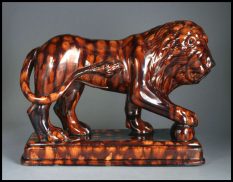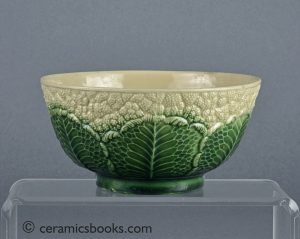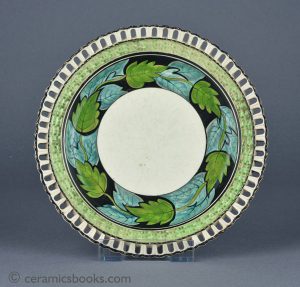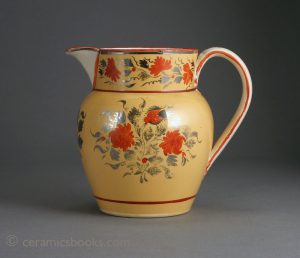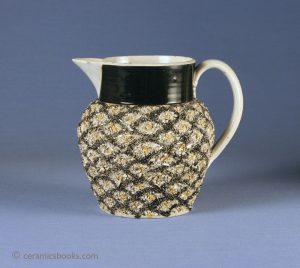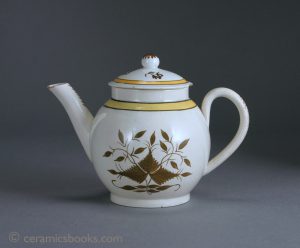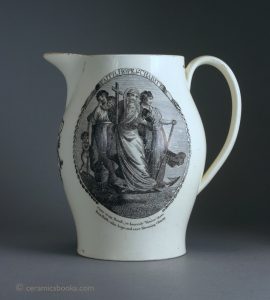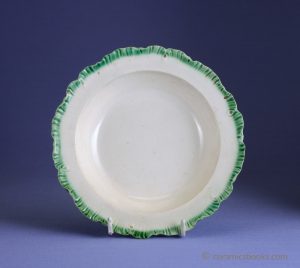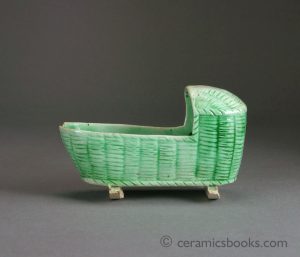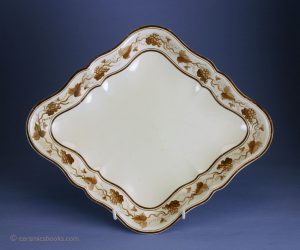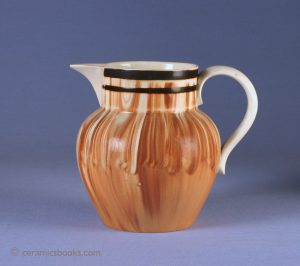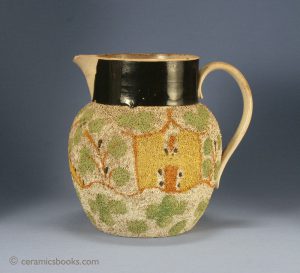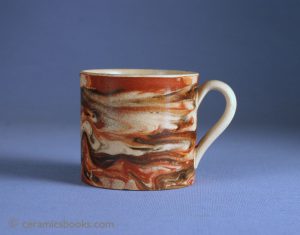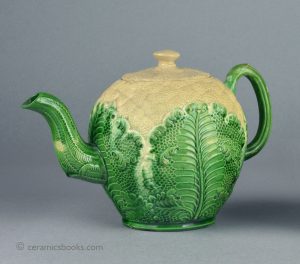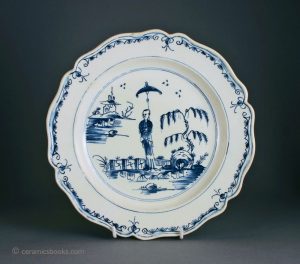Creamware
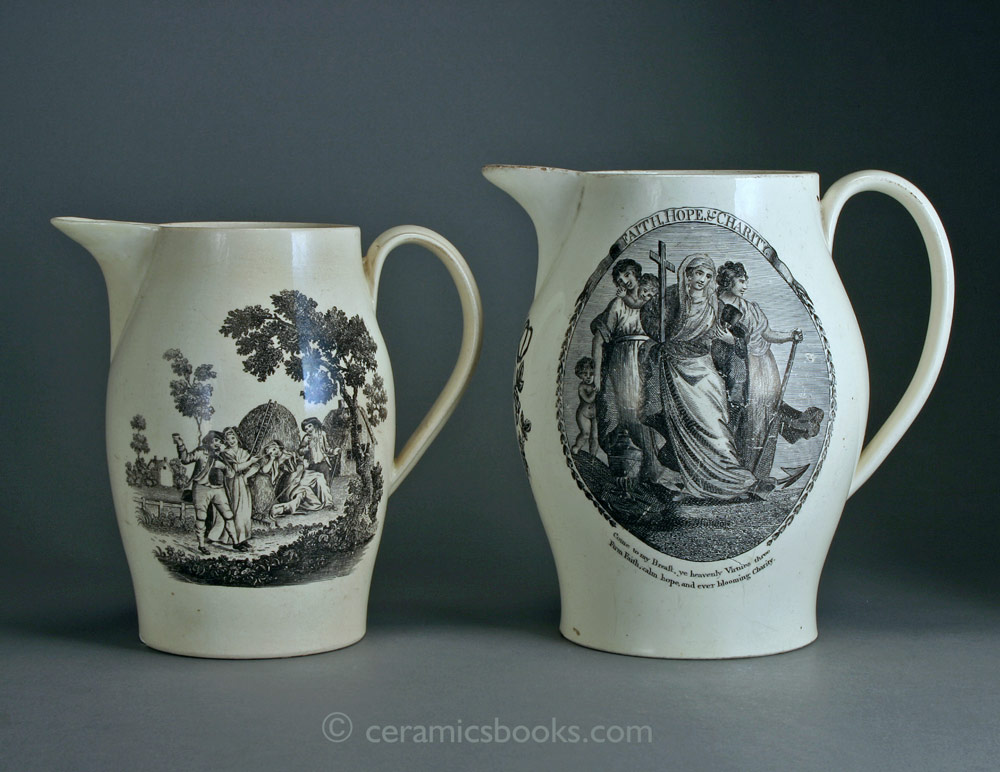
Creamware or cream-coloured ware is a cream to pale yellow light-coloured earthenware that has a clear lead glaze. The glaze may show a greenish yellow tinge of colour where it pools. The white clay body has added china clay and flint and is much the same body as used for white salt-
There were many early versions of light bodied earthenware in the C18th that were the forerunners of creamware, but it was Wedgwood who refined it circa 1762. Wedgwood marketed his creamware as Queen’s ware from c.1765 following patronage from Queen Charlotte.
Many British potters produced creamware but few of them marked their wares, especially earlier wares, which can make attribution very problematic. Known centres of production include Staffordshire, Liverpool, Leeds, Bristol, Bovey Tracey in Devon, Derbyshire and many other places.
Sadler and Green of Liverpool developed (soon after the porcelain factories) a form of transfer printing on earthenware called ‘bat’ printing which was used extensively on creamwares. Other forms of decoration include enamel painting and coloured glazes such as ‘Whieldon-type’ ‘tortoiseshell’ type wares etc.
